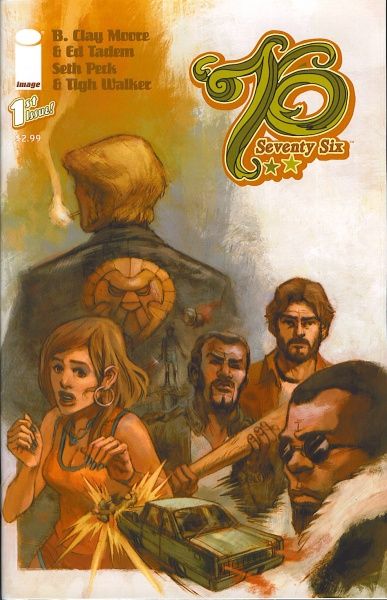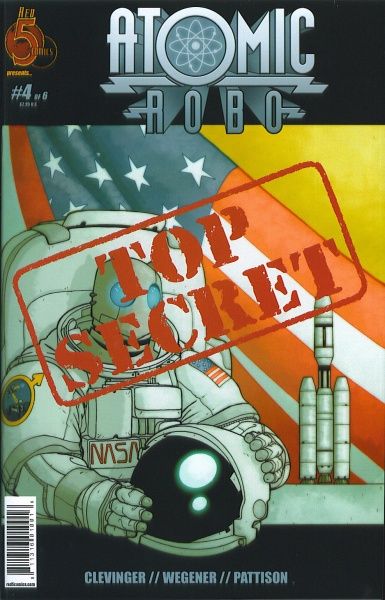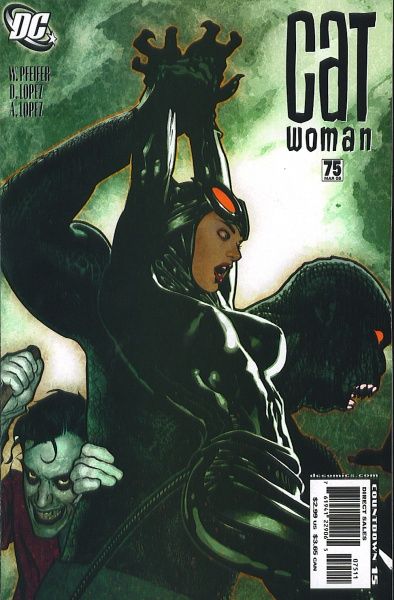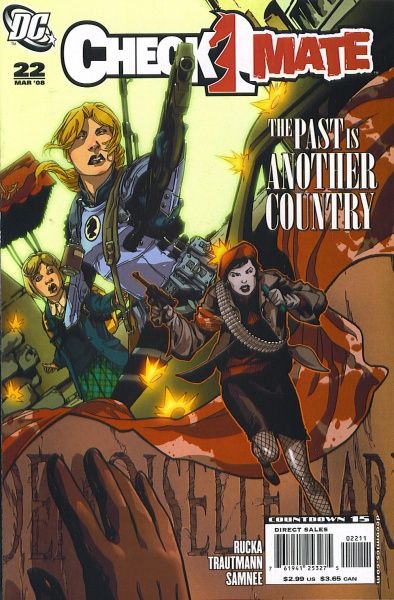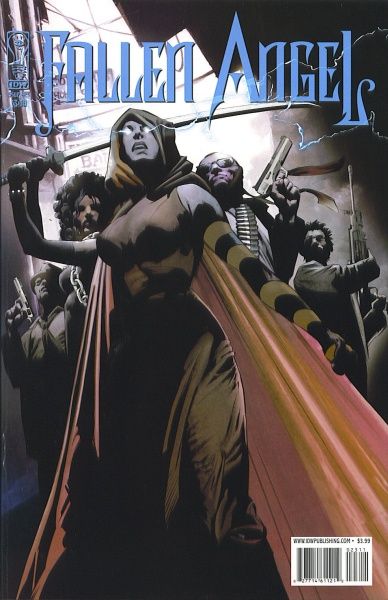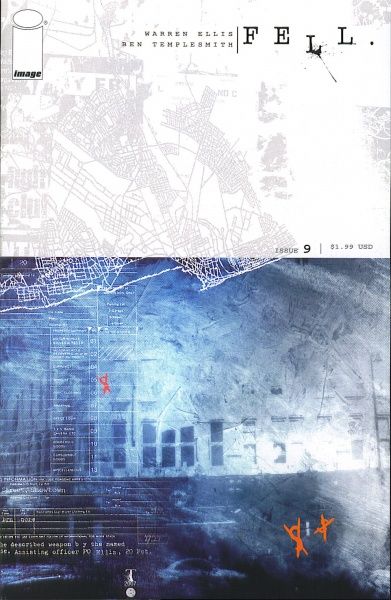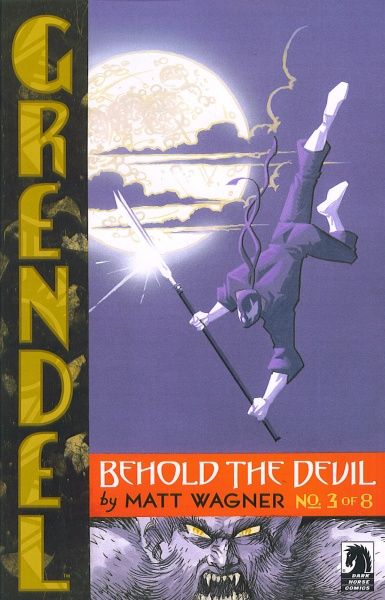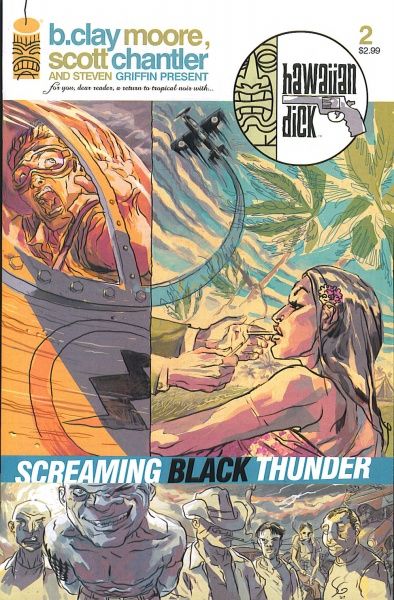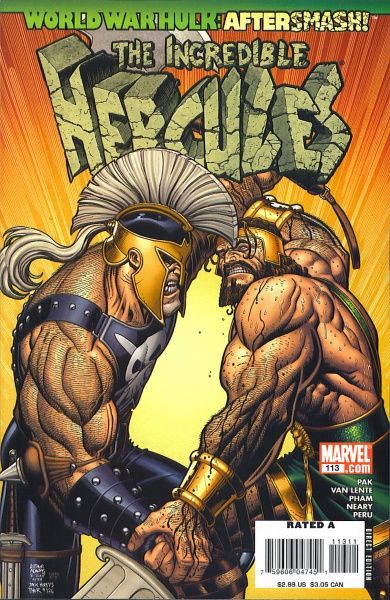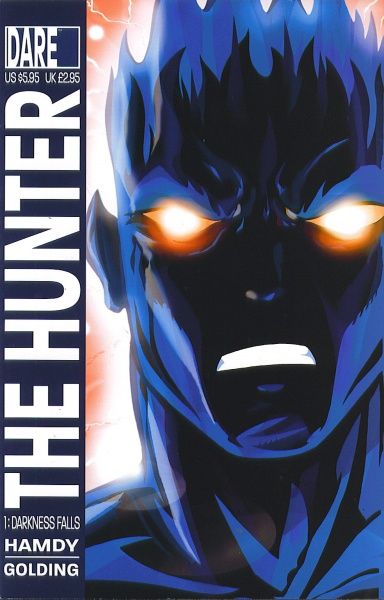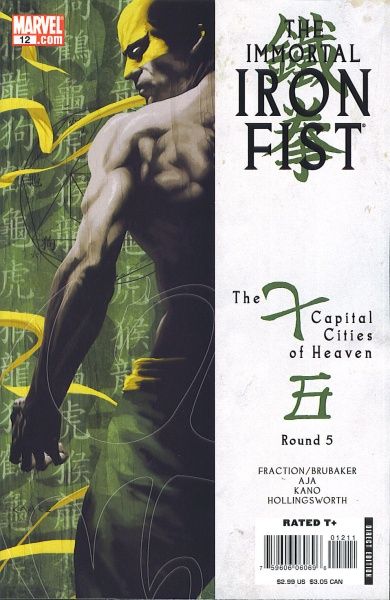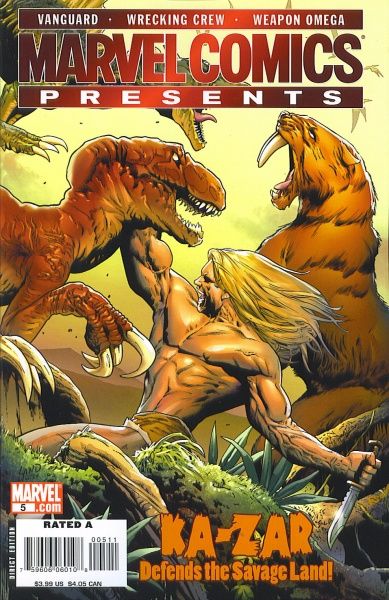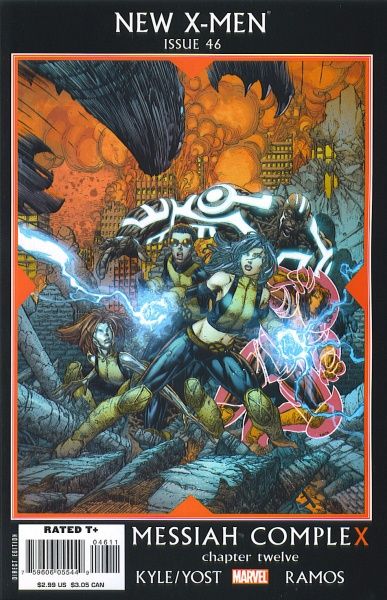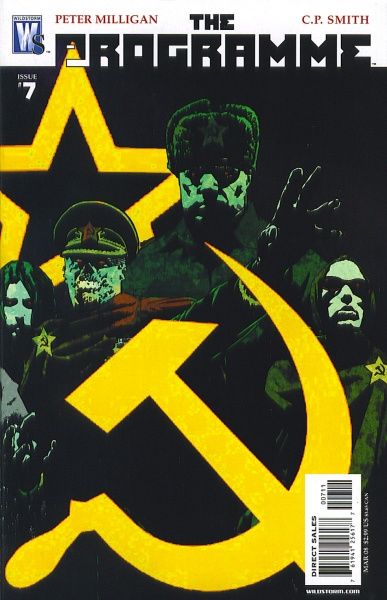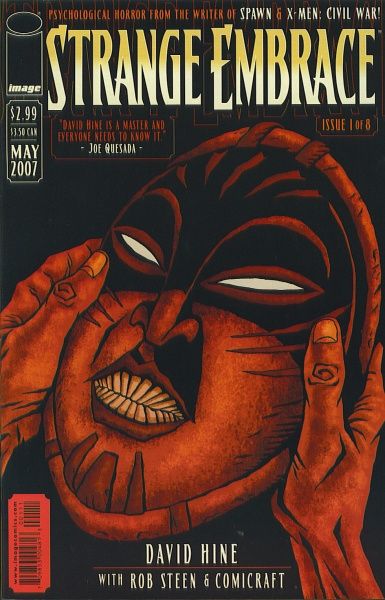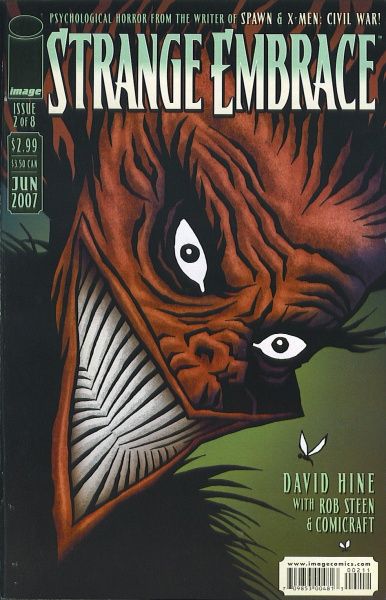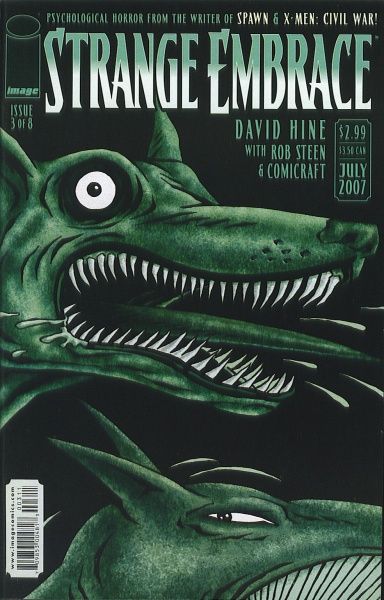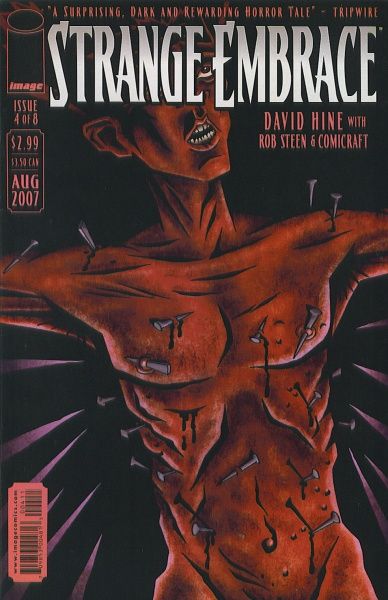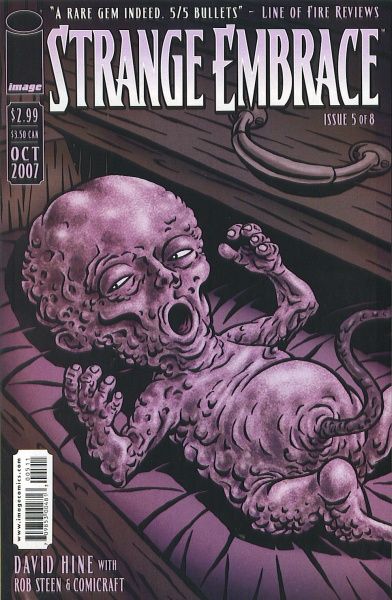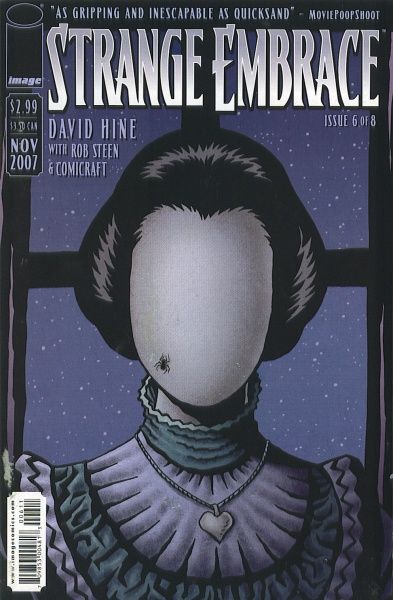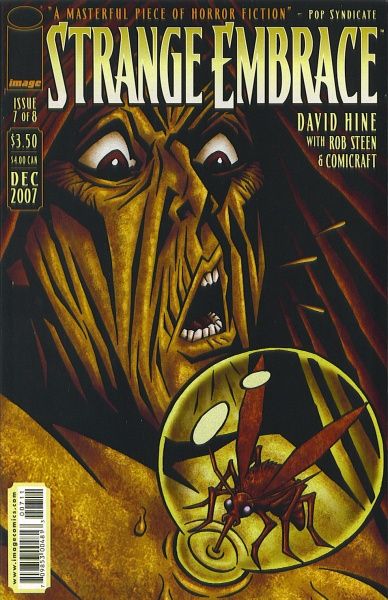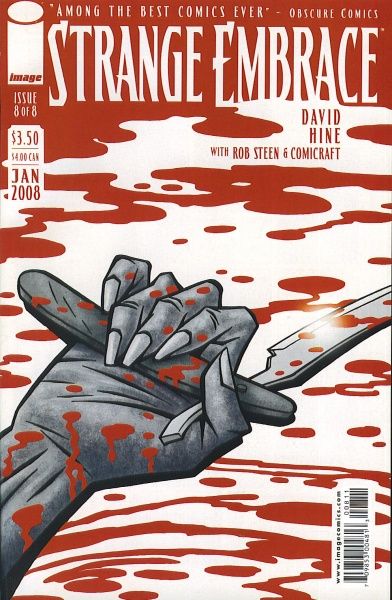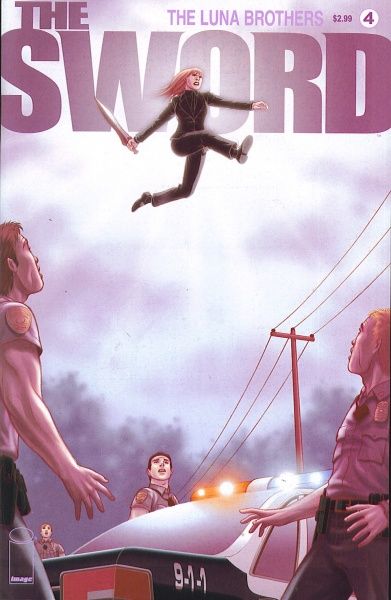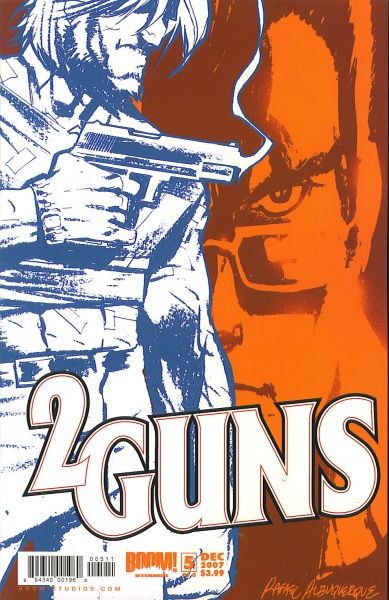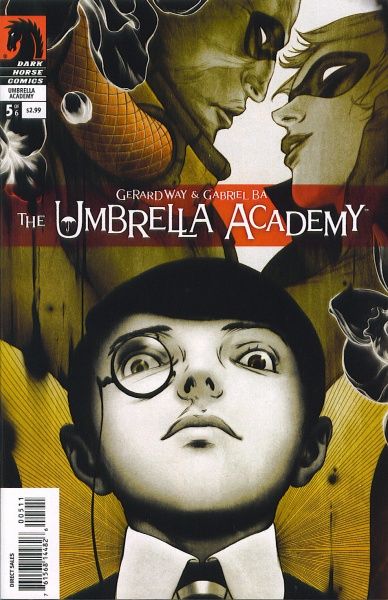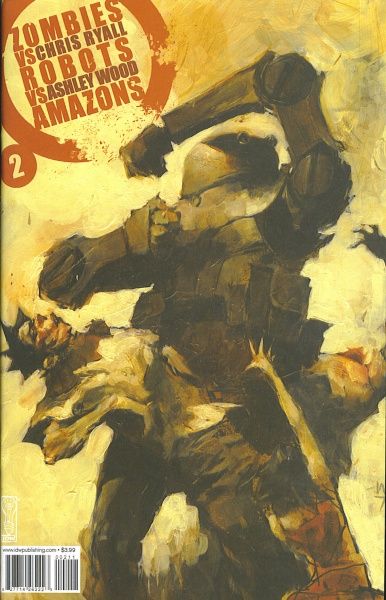It's already Sunday, and I still haven't posted this. Man, I'm slow. I had a bunch of books to read, and I've had some other things to do, so I apologize for the lateness of the post. I'm not sure how many of you care that it's late, butthat's no longer my concern, because it's time to check out the books I bought this week! Whoo-hoo!
76 #1. "Jackie Karma" by B.Clay Moore (writer) and Ed Tadem (artist); "Cool" by Seth Peck (writer) and Tigh Walker (artist). $2.99, 27 pgs, B&W,Image.
This is a strange comic. It's two, two, two stories in one comic, and they're both entertaining, but I'm not sure why it's set in 1976. I think it will come out more as the series progresses, because in the back of the book Moore explains that one of the characters was "finding [his] voice" "in the late sixties." He was an activist, and now, in 1976, he's researching law. The idea of a former Black Panther (Moore doesn't use the term, but the timeline fits)starring in the story, or even some other things that make the time essential, would be nice, because if it doesn't, this becomes two stories, one about a kung-fu fighter coming out of retirement and the other about two bounty hunters tracking down a girl who got away from a drug deal gone wrong, that could easily be told in any time period. Either of these stories could even be television shows from the 1970s, but at least those were made in the 1970s. If Moore and Peck (and the artists, of course) don't make it more relevant to the 1970s, then it's just some people indulging their love of the Me Decade with some nostalgic funk-wanking. So I hope it's not that.
Oh, there are stories? Yeah, I guess so. The first one starsJackie Karma (which is a fun name, I admit), who is now a New Yorkattorney but once was a street fighter of reknown. A dude comes back on the streets and finds his old buddy Bobby Howler and tells him that they better stay out of his way. Jackie would say, "Every time I think I'm out, they keep pulling me back in!" except he's not Michael Corleone, and puts on his magic Golden Lion leather jacket and Golden Lion belt buckle. They're the source of his powers! Oh, and there's some kind of ninja killing mobsters. The second story, set in Los Angeles, concerns Pete and Leon, two bounty hunters. They're called into find Cherry Baum, a girl whose boyfriend is killed in drug deal gone bad. She escapes with the money (and somehow, the drugs, although how she got them into her car is unexplained) and now the bad guys are after her. Oh dear.
They're both entertaining enough, but that's about it.It is, however, as if we're getting 21st-century versions of1970s TV shows, as I wrote above. Remember the movie version of Starsky and Hutch? Yeah,I know it sucked. But itsucked partly because it was set in the Seventies, but a 1970s that had all the cliches of the 1970s in a kitschy manner.Yes, the 1970s were like that to a degree, but not to the degree that they were played up. In this book, there are fewer annoying cultural touchstones, butit still feels like it's people thinking the 1970s were cool, sothey set a book in the decade. Even the "credits" of the second story, "Cool," feel like a '70s show, with the names of the characters superimposed onto panels over the action: Pete, for instance, is named as he's thrown out of a window, and I can imagine a freeze frame as he's falling through the air and his name in cheesy yellow graphics on the screen. Anyway, it seems that if the creators don't do anything with the time period, this is just a mildly entertaining comic book. We'll see.
Man, I go on about stupid shit, don't I? Let's move on.
Atomic Robo #4 (of 6) by Brian Clevinger (writer), Scott Wegener (artist), Ronda Pattison (colorist), and Jeff Powell (letterer); back-up story by Clevinger (writer), Zack Finfrock (artist), and Powell (letterer). $2.95, 27 pgs, FC,Red 5 Comics.
This is another strange issue. When last we left Nikola Tesla's greatest creation, Robo was inside a pyramid that had decided to take off across the Egyptian desert. It exploded, and as we begin this issue, Robo's team of Action Scientists finds him lying "unconscious" on the sand, and they wonder how to "wake" him up. So while he's out of it, he reminisces about 1975, and the time Carl Sagan asked him to go to Mars. And he does. But here's what's weird: He doesn't do much on Mars. He reminisces for 14 pages, and basically, it's an opportunity for Clevinger to come up with a funny resolution to his year on the planet. It's a rather funny resolution, to be sure, but what's the point? Robo returns to consciousness, and the Egyptian president isn't happy that he blew up a pyramid. Before the president's tanks can do some damage to our hero, a big ... something comes out of the sand. Robo must fight again!
It's a funny issue, but it just doesn't make much sense. Maybe it will in the final two issues, which might explain what connection this issue has with the overall plot and if Robo made an enemy for life on Mars who is currently controlling things behind the scenes (which would be awesome, given who that person is). But it's kind of a dull issue even though it has some funny lines, because it feels like it's all there for one message. That's a lot of padding for one small pay-off. I'll still get the fifth issue, because it's a mini-series, but this particular issue isn't that great.
Catwoman #75 by Will Pfeifer (writer) David López (penciller), Ãlvaro López (inker), Jeromy Cox (colorist), and Jared K. Fletcher (letterer). $2.99, 22 pgs, FC,DC.
You know, I'm just not interested in "Selina-on-another-planet" Catwoman. Pfeifer makes the best of it, I guess, and at the end, it appears that she's back in Gotham, but I'm sure she's not. It's just kind of boring. This is pretty antithetical to what Pfeifer and his predecessors have done with the book, and if I wanted to read Salvation Run, I would. But I don't. Back in the day, whenMarvel sent a bunch of superpeople off to fight each other and give Spider-Man a new costume, their regular books weren't impacted that much, were they? I wasn't buying comics back in the mid-1980s, but when I read back issues, they just skip over Secret Wars in the regular books and explain in a footnote that "it happened in Secret Wars - pick it up!" So if DC wanted to send Selina off to Weirdo Planet, couldn't they do it in the mini-series and then have Pfeifer just obliquely refer to it in her own title? It's not like anything serious is going to happen to her, because although her series doesn't sell terribly well, she's still a relatively major player in the DCU, and we all know this situation of sending super-villains to another planet isn't going to last. So why can't Pfeifer just ignore it? It's vexing.
Checkmate #22 by Greg Rucka (writer), Eric Trautman (writer), Chris Samnee (artist), Travis Lanham (letterer), and Santiago Arcas (colorist). $2.99, 22 pgs, FC,DC.
The two-part story focusing on Josephine Tautin comes to a close with no surprises, just some good storytelling. The main story, about Josephine's efforts to rescue the kidnapped child of her former lover, is a decent way to show just how bad-ass she is, while the back story, which concerns her rejecting his offer of marriage, shows how devoted she is to her country. There's nothing flashy about the two issues, but they do a good job focusing on one of Checkmate's major players.
I do have a question about the page on which Josephine becomes Mademoiselle Marie by naming all her predecessors to show that she has a sense of history. Let's check them out, shall we? She mentions Sabine, who gets inside a Nazi stronghold as a servant and kills an evil colonel. Sabine is also the woman turning the title over to her. She mentions the woman who is executed even before that in the issue, an event that took place in February 1944 (and I guess is the Mademoiselle Marie that appeared in old comics and was in love with Sgt. Rock). She mentions a woman participating in Operation Biting at Bruneval in 1942. She mentions a woman marching "with General de Gaulle in Gabon." This took place in 1940. Going further back, she mentions a woman defending "the sacred road during the Battle of Verdun." Then she mentions the women we saw last issue, the woman who helped Louis-Philippe become king in 1830, and the woman who rescued the aristocrats during the Terror(actually, it doesn't take place exactly during the official "Terror," but she rescues people from the Committeefor Public Safety, who weren't known for being nice). So what is Mademoiselle Marie's role, exactly? Whom does she serve? In issue #21, Sabine tells Josephine that "Mademoiselle Marie" "live[s] in service to France. Whenever she calls, you must answer. Wherever she sends you, you must go." This seems to indicate that Mademoiselle Marie is simply an agent of the French government. That obviously is not the case with regard to Elisabeth Saint-Marie, the Marie of the French Revolution. She is expressly defying the will of the government, as represented by the Committee for Public Safety. The nobleman she rescues is one whom, presumably, was oppressing peasants under the ancien regime of Louis XVI, yet she saves him from the "terror of the revolution," as Josephine recites when she is taking her oath. The case issimilar in the July Revolution of 1830 - Margaux de Mortain fought against the Bourbon king Charles X to install a constitutional monarch, Louis-Philippe, who himself was overthrown 18 years later.Charles X wasthe legitimate heir, and although Elisabeth Saint-Marie foughtagainst the regime that replaced the Bourbons (implying that it was the legitimate government), her successor fights against the Bourbons themselves (although, it should be noted, Louis-Philippe was from a cadet branch of the family). And although the defense of France in 1914 and the 1940s is noble enough, the invasion of West Africa in 1940 was the case of two imperialistic powers fighting over land in which they ignored the will of the natives. Where was Mademoiselle Marie in between these events? France wasn't exactly a paragon of freedom and democracy, although it had its moments. Where was she during Napoleon's rule, during Napoleon III's ramshackle rule, during the Franco-Prussian War (during which the French could have used her), or during France's imperial adventures? Did Sabine go to Indochina after World War II and help oppress the Vietnamese? Or to Algeria to help deny their freedom? For that matter, why is Josephine working for Checkmate now? This mission to rescue the girl isn't a French mission, it's a favor to the U. N. Secretary-General, as he explicitly says. What's Mademoiselle Marie's role in the French government these days?
I probably think about this too much, and all of this is probably too complicated for a mainstream comic book, but Rucka has shown in the past, especially in Queen & Country, that he knows how to write politically complicated stuff. Just saying Mademoiselle Marie represents "the spirit of France" is too easy, and begs too many questions. The stories of Josephine's successors are supposed to inspire us with the sacrifice each namesake is willing to make for France, but they make me wonder what her role is, and why we should feel good about her. Because Mademoiselle Marie killed some Nazis? Well, yes, but that's an easy way to make someone a hero. Beyond the threat of Nazis, are there some morally questionable things the women bearing the name have done?
Fallen Angel #23 by Peter David (writer), J. K Woodward (artist/colorist), and Neil Uyetake (letterer). $3.99, 22 pgs, FC,IDW.
At the end of last issue, we kind of got the feeling that this series was about to get a tad intense, and David doesn't disappoint.This promises to be the most emotionally searing story arc in the book since"Hurly-Burly" back in the old DC series, and I'm looking forward to it. This issue begins with a shock, as Black Mariah stumbles in Furor's with a knife in her back. Before Lee and Dolf can react, someone starts throwing grenades through the windows, and Lee goes out to fight him. Malachi, Mariah's lover, arrives and helps Dolf dress Mariah's wound. In a flashback, we learn that Mariah visited Jude and told him that something bad was going to happen to the city, and then she was stabbed by someone appearing as Malachi. We also learn that Gilles de Rais, the new villain, is indeed the 15th-century serial killer who hung out with Joan of Arc. He has become something much worse, though, as Lee discovers at the end of the book. Meanwhile, we learn something chilling about Dolf that seems to confirm everyone's suspicions about who he is.
It's a stunning issue, because David has set things up so well. David does this very well, taking his time with putting all his pieces in place, so that when everything falls down, they fall down with sudden and shocking violence. He pulls no punches, and it makes for a gripping read even as we're horrified by what's happening. This has been a very good comic for well over 40 issues, but with this one, David ratchets up the intensity, and it's a great read. Very often with Fallen Angel, I enjoy reading it, but I'm not on the edge of my seat desperate to read what happens next. This time I am. I don't have much doubt that David can come through with a great story.
Fell #9 by Warren Ellis (writer), Ben Templesmith (artist), and Chris Eliopoulos (letterer). $1.99, 20 pgs, FC,Image.
Yeah, that's me. I gave this my tardiness award for the second year in a row, and two days later, an issue ships! I rule!
Oh, and I guess I'm going to SPOIL this. Not too much, I hope.
I wanted to read the backmatter on this story, but Ellis doesn't give it to us. Maybe it's not from anything he read in the newspapers about the horrors of insurance problems, and just made up on his own. Taken on its own, it's a pretty good story. Richard Fell gets called to a hostage situation that turns out to be not a hostage situation, but a son who comes home from Afghanistan to find his parents dead because they couldn't get their meds thanks to an "insurance screw-up." The son is obviously a bit loopy himself, but Richard allows him some closure in a fun twisted way that allows us all to cheer because the "bad guy" gets his. As usual with this comic, Templesmith's art is fantastic, with the stick figure representing the son as Fell imagines him through the door (he's thinking about where the guy is based on the noises he's making) a nice touch. The fact that Fell's erratic behavior is starting to concern people is nice, too - Ellis promises in the back of the book that around issue #16 (coming in 2014!), Richard will reach a crossroads and we'll find out more about why he's in Snowtown to begin with. So that's nice.
However ... like Checkmate, I start thinking too much about some things. I worked for Blue Cross Blue Shield of Oregon for six years in the late Nineties. I didn't love the job, but it was easy, so I could do a lot of stuff on the clock, like wander around the city (Portland is very pedestrian-friendly), surf the web, chat with my co-workers, play bocce ball (the building ran an annual tournament), and get a graduate degree in History with a focus on seventh-century France (there's nothing more exciting than seventh-century France! and, to be honest, I got my degree off the clock). However, I did work occasionally, and I got some perspective on the health insurance industry. First of all, I became more of a convert to universal health coverage. There are certain things that should not be run like businesses, because in business, people often get screwed over first. Health insurance and education should not be run like businesses, because at the first sign of economic problems, the people they serve will get shafted, and that ain't right. However, I do recognize that health insurance is far more complex than politicians and writers of comic books make it out to be. BCBSO was a business, and businesses need to make money. Therefore, they needed to make hard choices about where they spent their money and what they spent it on. Whenever I read about someone not getting treatment for some health problem because they don't have insurance or their insurance didn't cover something, I ask myself: What is the company supposed to do? Give money away? They have a bottom line, as distasteful as it is. People claim they want universal health care, but nobody wants to pay for it. I think doctors, hospitals, insurance companies, and pharmaceutical companies charge waaaaaay too much for their services (a famous case here in Arizona a few years ago brought to light that a hospital charged a man something like $50 for a white T-shirt), but they're capitalists, and they're charging what the market will bear. If politicians really wanted to do something about it, they wouldn't be in the pocket of the pharmaceutical companies, and they are. Doctors are certainly complicit in this, but this issue implies that all doctors are turning people away because they're pure evil, sitting on their yachts twirling their mustaches and crossing names of poor people off a list. That's just a stupid way of looking at the problem. This is a serious problem, and although this issue highlights an extreme example, it's no different from a politician claiming there's a War on Christmas because someone said "Happy Holidays" at a Wal-Mart checkout line. We don't take those people seriously (well, we shouldn't). Yet we take this seriously (at least we're supposed to, because we're all good liberals). I would love to see someone do something about health insurance. Demonizing people won't get it done, though.
Man, I'm on a soap box today, aren't I? I LOVE IT!
Grendel: Behold the Devil #3 (of eight) by Matt Wagner (writer/artist) and Tom Orzechowski (letterer). $3.50, 20 pgs, b&w&r,Dark Horse.
There's a sad story in the latest issue of Wagner's latest mini-series. He wanted to release it as a honkin'-huge manga-style graphic novel, but the marketplace wasn't conducive to that, so we get the serialization of it. This is why it feels like we zip through the book - Wagner wanted it to be a big package that you zipped through, with lots of double-paged spreads. The inimitable Diana Schutz explains in the letter column that he's trying to balance the necessities of serial storytelling with the pacing he wanted for a bigger collection, and that's why the individual issues might not seem as meaty as we'd like. Of course, this drives people to wait for the trade, which drives down sales of the individual issues. Again, I'm puzzled by the economics of comics. Dark Horse isn't huge, but they've been around a while. Plus, they have to making some good chedda* from the licensing of Star Wars and Buffy, right? I have NO clue about the vagaries of comic book publishing, but Dark Horse pays a licensing fee to publish those comics, right? So I imagine the fee isn't that great, because they wouldn't pay it, and they feel that they can make truckloads of cash by publishing those comics. Also, there's the point that the Grendel trade paperbacks are going to be in print until the sun goes nova, so someone (I assume Wagner) will be making money off of them for some time. But doesn't Dark Horse make some money off of them, too? All I'm saying is that for some circumstances, why is the money not available? Some comics are meant to be serialized, but if Wagner wanted to do this a different way, couldn't it have been done? I guess not. This is why I don't think about the economics of comic books too much.
There's a story, of course, as Grendel realizes it's not Argent stalking him, but not after getting into a beautifully drawn fight with the wolf. Lucas Ottoman, meanwhile, makes a startling discovery. I wasn't sure if he or Detective Sparks, his lover, were going to survive this mini-series, but Ottoman won't, I fear. I could be wrong, but I'm sure the story of his demise will be interesting if inevitable. Let's hope I am fooled at the end of the book!
It's such a cool-looking book. I wish Wagner had been able to do it the way he wanted.
* I can use the street lingo, yo!
Hawaiian Dick: Screaming Black Thunder #2 by B. Clay Moore (writer), Scott Chantler (artist), and Steven Griffin (writer/artist of back-up story; colorist/letterer). $2.99, 24 pgs, FC, Image.
At the end of this comic, Steven Griffin explains that "wiki" in Hawaiian means "quickly," whence we get Wikipedia, which is someplace you find something quickly. Comics: educational, enlightening, and entertaining!
I'm not quite sure what to say about this. I like the issue, but it simply moves things along. The Zero that was about to attack the plane in which Dennis and Byrd were flying disappears, which is certainly odd, and then Dennis finds out that friends of Byrd are not exactly friends of everyone on the island. Two other members of the flying squad head to the library to map where the Zero may have gone, and Byrd gets jealous of Kahami's attraction to yet another flyer. In the back-up story, Kahami flees from her attackers, but something bad happens, and she gets pissed. Man, you don't want to piss her off!
I'm still not sold on Chantler's art, especially when contrasted with Griffin's in the back-up story. Chantler is more cartoony than Griffin, which doesn't work as well with the stories Moore tells. It's not bad art, but it feels a bit out of place. Griffin's colors help, though.
It's good to see this coming out, though, because of the book's notorious lateness. Of course, it's only two issues, so we'll see how the next three go!
The Incredible Hercules #113 by Greg Pak (writer), Fred van Lente (writer), Khoi Pham (penciler), Paul Neary (inker), Stephane Peru (colorist), and Joe Caramagna (letterer). $2.99, 23 pgs, FC,Marvel.
This book has actually changed its name, which is a bit weird. I mean, the adventures of Herc and Amadeus might last for a while, even a year or so, but it can't last, right? It's weird that Marvel changed the name.
I think I like Crazy Ares in this book more than Crazy Ares in New Avengers. Crazy Ares in New Avengers is kind of creepy, with his thoughts about making Spider-Woman his wench and all. I like this Crazy Ares more, because he's just batshit insane but has a twisted sense of humor. When he's blasting away at Hercules in kind of direct contravention of orders, he shouts to Simon Williams, who wants to talk to Herc, "I am sorry, teammate Wonder Man! I cannot hear you over returning fire!" Good stuff, Crazy Ares!
Amadeus, meanwhile, wants to attack S.H.I.E.L.D., but Herc thinks that's foolish. That is, until Crazy Ares shoots him full of Hydra blood, which poisons his brain and makes him blind with rage, and all Amadeus has to do is point him in the direction of S.H.I.E.L.D., which has a hidden base in the Pine Barrens in southern New Jersey. If Pak and van Lente don't bring in the Jersey Devil at some point next issue, I'll be sad. Don't make me sad, gentlemen!
Plus, the Charles Atlas Iron Man parody ad in the back of the comic is almost worth the price of the book alone. Chris Giarrusso is a frickin' funny dude.
This is a cool little comic. I have no clue where it's going, which is nice. That's always fun with a comic book!
The Hunter #1 by Adam Hamdy (writer) and David Golding (artist/colorist/letterer). $5.95, 64 pgs, FC, Dare Comics.
Remember when Bill Reed did that Reason to Love Comics about how comics smell? That was a pretty popular post, in case you missed it. Well, this comic smells good. I was trying to think of what it smelled like, and I came up with that Deathlok mini-series that Dwayne McDuffie wrote and Jackson Guice and Denys Cowan drew. Marvel put out those books for a while, with the heavier stock covers and better paper. Anyway, that's what this book smells like.
The writer, Adam Hamdy, who is also the founder of Dare Comics, was nice enough to send this to me, and in his letter he wrote that it "hits" stores in December. I assume he meant December 2007 and not the December coming up many months from now. So if you're interested, take a look for it.
It's a fairly typical comic, which doesn't mean it's bad, just typical. Four people arrive at four key spots throughout the United States and then disasters hit each target, from annuclear blast at LAX to a biological attack in Boston (Houston and New York are also hit). The president declares martial law. Meanwhile, we meet our hero, Gavril, who looks normal but can turn into that blue fellow on the cover and wreak some havoc. He's in Afghanistan, fighting terrorists and arms dealers. He's recalled to Washington to find out who's behind the attacks and to do something about it. We learn a little about him - he's Russian, apparently, and was part of some kind of experiment when he was younger. Also, he's not the only one in the book with powers. There's also a C.I.A. agent who feeds Gavril information, which she gets from some grotesque dude who lives underneath a video game arcade. It's all very clandestine.
The story is entertaining, even if it's not terribly original. Hamdy isn't the greatest scripter, but he has a nice handle on the characters, and the early pages, where the various bad guys move into position in Los Angeles, Houston, New York, and Boston, build tension nicely, especially in LA, where a C.I.A. agent wonders why the man who triggers the explosion is out of place. Unfortunately, he figures things out a bit too late. Golding's art is fine, although it's far from perfect. He also does a good job creating tension early on, and his portrayal of Gavril when he goes all super-powered is nice. The art lacks a certain dynamism, which works against it in some of the action scenes. However, it's comfortable art - this kind of looks like a comic from the 1970s, with better production values. That's not really a knock on it - the art has a certain familiarity about it that might appeal to a nostalgic bone somewhere in your body.
I'm not entirely sure this is worth 6 dollars, which is a bit of a shame, because it has potential. I don't know how many issues it's slated for, but I wonder if the format will keep people from trying it. New comics from new companies are always a tough sell, and adding on the price makes this even tougher. But I wish them good luck with it!
The Immortal Iron Fist #12 by Matt Fraction (writer), Ed Brubaker (writer), David Aja (artist), Kano (artist), Javier Pulido (artist), Matt Hollingsworth (colorist), and Artmonkeys Studios (letterers). $2.99, 22 pgs, FC, Marvel.
Come on, it's Iron Fist. Of course it's awesome. Danny discovers a plot in K'un-Lun, and other stuff also happens. The fight between the Prince of Orphans and Davos is incredibly drawn by Aja. The Prince of Orphans wants to teach Davos a lesson after his brutal treatment ofTiger's Beautiful Daughter, andAja does an excellent job showing just how fast the Prince of Orphans is and what he's capable of. It's breath-taking.
I am a bit confused about Pulido's rendition of Misty. Last time I checked, she was black. In this book, she looks ... well, not black. Her hair is short and straight, and her coloring is kind of very light brown. She looks nothing like Misty Knight, in other words.Did anyone else notice this, or am I crazy?
Marvel Comics Presents #5: "Vanguard" by Marc Guggenheim (writer), Dave Wilkins (artist), A. Crossley (colorist), and Dave Sharpe (letterer); "Savage Land" by Christos N. Gage (writer), Joyce Chin (artist), June Chung (colorist), and Sharpe (letterer); "Breaking Away: A Wrecking Crew Story" by Merrill Hagan (writer), Staz Johnson (penciler), Tom Palmer (inker), Ian Hannin (colorist), and Sharpe (letterer); "Weapon Omega" by Rich Koslowski (writer), Andrea di Vito (artist), Laura Villari (colorist), and Sharpe (letterer). $3.99, 32 pgs, FC, Marvel.
You know, I'm supposed to toe the line when it comes to our Dread Lord and Master, because he can, at any time, make anyone impotent with his mind (and that's some kind of scary talent), but I'm going to have to disagree with him on Joyce Chin's art in this issue. It's got a real undergound comix feel to it, slightly bizarre and unreal, which is in contrast to the story, which is a simple adventure story in the Savage Land, starring Killer Shrike, of all people. It's an odd mix, but it works. Maybe Brian didn't like the fact that it doesn't seem to fit the story, but that's part of what makes it work. I just hope he's in a good mood when he reads this, because maybe he'll spare my family in his rage!
New X-Men #46 by Craig Kyle (writer), Chris Yost (writer), Humberto Ramos (penciler), Carlos Cuevas with Dave Meikis (inkers), Edgar Delgado (colorist), and Dave Sharpe (letterer). $2.99, 26 pgs, FC, Marvel.
This thing ends next week. Next week! Doesn't it feel rushed, even withso manyissues already under our belts? It's weird.
I don't have much to say about this. I'm not quite sure how Rogue, who is unconscious, can control her power as Gambit impliesshe does. I'm also not quite sure why Gambit is back on the good guys' side for apparently no reason.Oh well. And Cable is going to take the kid into the future? How does that make sense, if the idea is to figure out why, suddenly, there's a baby mutant? Sigh.
This has become more messy as we've gone along, as crossovers tend to do, but we'll see how it all wraps up. Save us, MikeCarey!You're our only hope!
The Programme #7 (of 12) by Peter Milligan (writer), C. P. Smith (artist), and Pat Brosseau (letterer). $2.99, 22pgs, FC,DC/Wildstorm.
This is another comic that is really going off the rails a bit. The Russian superpeople in Las Vegas part of the book is fine, and Max and Senator Joe coming into the fight is okay, too. The apocalyptic elements are odd, though. There's some white supremacist group that attacks and burns a black church because ... well, I'm not sure why, exactly. They leave a manifesto about social Darwinism, but do they believe that the advent of the Soviet bad guys signals the end of the world, so let's go burn some black people? Is that it? It seems like a strange excuse to burn a church down, unless it's a Russian Orthodox church. I guess Milligan is going for some kind of end-of-the-world vibe, but like a lot of this book, it's weirdly detached.
As usual with something like this, the central premise is good enough to keep me around, because I know it's going to end after the twelfth issue, but sometimes getting there is a bit of a strange journey. I always have hope, though. Maybe I'm naive.
Strange Embrace #1-8 by David Hine (writer/artist), Rob Steen (colorist), and Richard Starkings (letterer).$2.99, FC, Image.
Richard Starkings sent the first six issues of this to me a few weeks back, and since the final issue came out this week, I figured I'd pick up issues #7 and 8 and read the whole damned thing. It's oneof the first books Hine did, and it came out in the early 1990s from Tundra UK. It'salso one of the more horrifying books you will read, as Hine tells a tale of old sins haunting the present and people who are caught up in a web of evil from which there is no escape.Strange Embrace isoneof the few books thatis truly creepy and remains so throughout,not just in the set-up but in the execution. There are no monsters in Strange Embrace, just people (although one character istelepathic), and that makes it even more unsettling.
Hine tells the story in a very unusual way. Sukumar, afifteen-year-old son of a shopkeeper, is tasked to take a delivery to Corbeau's Antiquities, a boarded-up store in the wrong part of town.The store is filled with African art, which freaks Sukumar out. One day, he sees the proprietor, but runs away before the man can talk to him. As snow begins to fall, he meetsAlex, an albino psychic, whotakes him into a cellar and begins telling him his life story. Alex is a nasty man, and his life story is full of murder and horror. Eventually, he ends upas a tenant in Anthony Corbeau's mansion, and hefinds himself fascinated by the old man, who's a recluse. He probes Corbeau's mind for his secrets, and begins to write a novel about his past. This story, which takes placeat the turn of the twentieth century, forms the bulk of theseries. Anthony is a young man, and his father lets him take overan antiques shop to teach him how to be a respectablebusinessman. Anthony eventually marries a woman named Sarah, but he's not interested in her all that much. As the book unfolds, we learn the family's secrets, like what happened to Anthony's mother,Anthony's father's health problem, and what Anthony does in his antiques shop late at night.It doesn't end well, as you might expect. We learn this fairly early, and the story concerns Alex's attempts to find out how things go terribly wrong.
So this is astoryin which a character (Alex) and his psychic projections (hecreates them to narratetheir parts of the stories) is telling another character his own lifestory, which then turns into Alex telling Sukumar about someone else's life. The strangest thing about the way the story istold is that we're not quite sure ifAlex is telling the truth.When he beginswriting his book, he admits that he was just getting flashes of Anthony's life, and hefilled in the gaps. Later on, he finds Sarah's diary, but we're still not sure ifAlex is making some of it up. Plus, Hine tells the story fromdifferent points of view, which is very neat. By the end of issue #4, we've reached a point where things have pretty much gone to hell. Anthony's father has died,and Sarah learns Anthony's horrible secret. ButAlex wanted to know what went on between Sarah and Anthony, and Sarah and Edward (Anthony's father), and what happened to Anthony's mother. So he finds Sarah's diary, and the awful truth is revealed.
The story is well structured and quite gripping, because Hine always teases us with more, and he's always in control of the pacingand the revelationsin the series. His art works well, too, because it'ssomewhat surreal and twisted,fitting the idea of a veneer of respectibility hiding darkness in the soul. When thetone of the book becomes darker and more horrifying,so does the art. Sarah's trip to an insane asylum is a descent into hell, and Hine's art reflects that wonderfully. A trip to Venice starts out brightly, but as the characters become more twisted, the cityscape becomes a nightmare of grotesqueries. It's a chilling book to look at as well as read.
There are a couple of problems with the series. First, nothing that happens, as creepyasit seems, is all that original. It's a tale of sexual repression, and since most of it is set during Victorian times, we can guess a lotof what happens and what's going to happen. That's not to say it's not effectively told, butwe're not as shocked as perhaps Hine wants us to be, because we've seenvariations of this sort of thing before. Anthony's deepdark secret is upsetting, butnot shocking. I understand that we don't need shocks for a story to be effective, and the way Hine tells the story goes a long way, but it also leads to the second problem I have with the book: the way it ends. Nothing goes well for anyone, and we don't really have a character we can relate to. Sarah is the most sympathetic character in the older story, but because of the way Hine tells the story, we're curiously detached from her, even as we recognize and pity the horrors she's going through. In the present, Sukumar is supposed to be our surrogate, but we don't really know much about him. The final resolution is unsatisfying because it's so very bleak, and we're not quite sure what to think of it. I was reminded of the movie Seven when I reached the end. I mentioned not too long ago how much I loved the movie, despite its utter bleakness. It's similar to Strange Embrace in that it reaches a logical end, and Fincher refuses to cop out, which I appreciated. Strange Embrace also reaches an ending that is perfectly logical within the framework of the story, but whereas we sympathize greatly with both Brad Pitt and MorganFreeman in the movie, at the end of Strange Embrace, there's no one really we can sympathize with.Sukumar's fate is interesting, but notreally as upsetting as Hine wants it to be. And Alex is a loathsome character, so we're not quite sure what to think about the way the comic ends. I don't really want a happy ending, because that would also betray the tone of the book, but it's so bleak that itrepulses us slightly. I just saw No Country for Old Men (which is freakin' brilliant, by the way), and even though that is terribly bleak as well, there is a sympathetic survivor to tell the tale. Who will tell Alex's tale?
Despite these reservations, Strange Embrace is avery goodcomic, in that it gets under our skin and makes us very uncomfortable. It forces us to confront things that we don't really want to, and Hine never lets us forget the horrors that lurk under the most placid surfaces. It's not a fun comic, but it is a gripping one, and although it's frustrating at the end, it's a frustration at the way things don't always go the way we want them to, not one at the poor conclusion of a story. It's frustrating because we know that evil often wins, and we don't like that. We shouldn't blame David Hine for that, however.
The Sword #4 by Jonathan Luna (story/illustrations) and Joshua Luna (story/script/layouts/letters). $2.99, 22 pgs, FC,Image.
I read the last issue of The Sword and decided to check out the next one, because issue #3 was okay but I still have the bad taste Girls left in my mouth, so I wanted to get a better sense of the comic. So I picked this up.
Well, it doesn't anger me as much as Girls did, but it still isn't that interesting. The concept isn't bad. Dara, a parapalegic, is the heroine. In issue #1 her family is killed by mysterious people looking for a sword. She finds it, and it cures her. She can also fight really well, leap tall buildings in a single bound, and do other amazing things. In issue #3, she was chased by evil dudes who wanted the sword, and when she managed to get to it, she slaughtered them all rather easily. Of course, just as she finished, the detectives investigating her family's death showed up. Now that's an awkward moment. They, quite naturally, think she killed her family, and even after she shows them that the sword is magic, they still don't accept it. She escapes with her friend and a kid who was a student of her father's, but she eventually gives herself up while making sure the other two get to safety. We also learn a bit about the people who are after her, and it sounds typically unpleasant.
So the concept is sound: a fantasy world, supposedly created by her father, is actually his life, and it's intruding on the real world. The Luna Brothers obviously know what they're doing, and they make sure there is enough plot development balanced with action to make the book move along, even though they're building a bigger storyline. I'm not really sure why it's not something I want to continue reading. Maybe it's the art, which is fairly bland except for the action scenes, which the Lunas do very well. I have never been a huge fan of their work, especially the faces and heads of the characters, which are dull. Perhaps it's because it feels like the characters are saying exactly what we expect them to say - it's not a surprising book. There's something to be said for familiar storytelling, but this seems almost like storytelling-by-numbers, and I'm just not that impressed with the way the plot is going. I don't think it's a bad comic, like Girls was, but it's not a very good one either.
Or maybe it's just a case of me not connecting to a comic. It happens. Oh well.
Two Guns #5 (of 5) by Steven Grant (writer), Mat Santolouco (artist), Amanda Grazini (colorist), Marshall Dillon (letterer), and Terri Delgado (letterer). $3.99, 22 pgs, FC,Boom! Studios.
Steven Grant's latest opus comes to an unsatisfying end, mostly because, in the famous words printed on the back of Planet of the Capes, "Everybody dies. Nobody learns anything." Everybody doesn't die in this mini-series, but a lot of people do, and at the end, I wonder what the point was. I like twisty noir tales as much as anyone, and this comic has plenty of twists, but we're left with Bobby and Marcus in pretty much the same position they were at the beginning, and I keep asking myself what Grant is trying to say. Greed is bad, I guess. But didn't we already know that? Again, I turn to movies for an analogy. I think of The Usual Suspects, another story in which it doesn't really appear that anyone learns anything. However, that movie had a great - and I mean GREAT - twist at the end of it, and the acting was top-notch. The final twist in this comic is fairly easy to guess - Bobby, in fact, does guess it earlier in the book, then rejects it - and it doesn't reveal anything about any of the characters except that they're all greedy. This is a mildly entertaining comic, but I'm not sure it's worth 20 dollars just for a bunch of bad people to kill each other.
Santolouco, unfortunately, has some issues with storytelling, which makes the comic a bit more problematic. His individual drawings are fine, but his panel-to-panel progressions are often confusing. Maybe this comes from Grant's script, and I shouldn't blame the artist. Here's an example: in issue #4, Manny the Drug Lord has Bobby and Marcus locked in a chicken coop. He sends his men to get Bobby so he can kill him (Bobby, an undercover D.E.A. agent, helped in Manny's arrest, so Manny's pretty pissed off at him). The men specifically say to Marcus, "Not you," leaving him in the chicken coop. The panels show Bobby being taken into the house alone. Manny is sitting in the living room, and Marcus is standing next to him. Huh? What the heck? When did that happen? It's never explained. Characters kind of show up at random in the book, and it's a bit frustrating. Again, I'm not sure if it's Grant's script or Santolouco's poor storytelling, but the art knocks us out of the story too much.
So this is a bit of a disappointment. Too bad.
The Umbrella Academy: Apocalypse Suite #5 (of 6) by Gerard Way (writer), Gabriel Bá (artist), Dave Stewart (colorist), and Nate Piekos (letterer). $2.99, 23 pgs, FC,Dark Horse.
There are a couple of amazing moments in this comic, on sort of icky and one extremely shocking. How is Way so good at this comic-book writing thing when people who have been doing it for years still aren't very good at it? He paces this comic very well, doling out shocks that fit into the story and keep the story zipping along toward a stunning conclusion (let's hope). There is one thing in the book that puzzles me: Number Five is talking to Pogo, and he begins to tell him about what happened to him, and he says he should start with the Kennedy assassination, then suddenly there's a bizarre scene in which it looks like Pogo is being tortured, and Number Five suddenly collapses. What exactly happened there? Do we know, or are we going to have to wait until next issue? When issue #6 comes out I'm going to re-read the whole thing, so am I just forgetting something that happened back in an earlier issue? I can't be bothered to look right now, because I'm lazy. Anyway, it's a minor point, because the attack of the White Violin is so astonishing, and the opening scene, in the aftermath of Number Five's encounter in the diner, is amazing. What a cool comic.
Zombies vs. Robots vs. Amazons #2 by Chris Ryall (writer) and Ashley Wood (artist). $3.99, 22 pgs, FC,IDW.
Here's a comic that ought to be better than it is. Wood's art looks great, of course, and his twisted sense of humor comes through very often, like when theZombie Minotaur says "Moooeeeat!" It's a nice book to look at, but it'smore uninteresting than it should be. I'll admit, I'm not as jazzed by zombies and robots as some people are, but Ryall doesn't do much with them. The back storywas barely established before the zombiesmanaged to get to the Amazons' island and start wreaking havoc. In this issue, the big battle is between the robot and the Zombie Minotaur, although the Amazon girls, who are forced to grow upquickly when their mothers are zombie-fied, get into the action as well. But basically, these two issues have led us to the final page, where Dhysa, the new queen, says, "Let's go kill them all." So it's three issues of absolute mayhem, basically. Not that there's anything wrong with that, but for 4 bucks a pop, it's kind of shallow. As junk food comics go, you could do a lot worse than three issues of AshleyWood drawing Amazons and a robot killing zombies. But it's a lot of money for barely anything else. Be warned!
Phew! Are you still with me? I'm sure some of you wandered off to get a snack and never came back. Sorry for the many rants. I just love ranting sometimes, and the poor readers bear the brunt of it!


